#blame gygax
Explore tagged Tumblr posts
Text
In a fantasy setting where humans and elves have significantly different lifespans and rates of maturing, such that, for example, a 20 year old human is an adult while a 20 year old elf is still a child, and the two races are capable of interbreeding, producing a viable hybrid (we'll assume Half Elves are not mules for the sake of argument) and the half elves have yet another different rate of maturity, such that a 20 year old half elf is perhaps, an adolescent but not yet an adult, then it implies a possible situation where heavy interbreeding of the two peoples, with many generations of people with at least some elf or some human blood interbreeding could create a society in which the rate at which a child matures is largely random. The more expressive their human heritage, the faster they grow and the more expressive their elven heritage, the slower they grow, with potentially serious consequences for overall life spans as well. What if the genetic lottery lands you with a human maturity rate an elvish life span? hot diggity! but then the opposite could also occur, an elven rate of development with a human life span, such that you don't reach full physical maturity until something like 40 or 50, and only live to about 90?
Now lets throw some other fantasy races into the genepool just to piss everyone off. Some sources purport orcs to be even faster to maturity than humans, reaching full adulthood within about 15 years, but typically living only to about 60.
So now we have a population of half elves and half orcs interbreeding for many generations to produce a population that is largely homogenous, mixing the traits of elves, humans, and orcs more or less evenly, with wildly different rates of development depending on the predominance of certain genes.
Lets then say, for the sake of argument, that this population has certain genes expressed more commonly than others, specifically, the genes controlling rate of maturity will likely favor the human and orc maturation rates, as individuals with those traits will reach adulthood sooner and have a better chance of reproducing, reinforcing the presence of those genes in the population, such that within an arbitrary number of generations we basically stabilize the rates of maration to something like 15-20 years to full adulthood. But, crucially, the elvish traits are still present in this population, and as such it is possible that occasionally, a child will be born who expresses the slower rate of maturation. You then basically have these forever children living among a people that are aging at basically a normal human rate (their maximum lifespan might be longer than a normal human's depending on how the genes for long life faired in the face of selective pressures). this presents a very real possibility of children who will not be adults until their parents are becoming geriatric.
Now, i know you've sat through this pointless treatise about fantasy race mixing but here's the thing that interests me. In these communities, how would these forever children, or perhaps "elf children" if the cause for their long childhoods is known, how will they be perceived by the people? Many factors might effect their perception and treatment, but I feel that ultimately such a person might be seen as a disabled, as they are simply developing so much slower than anyone would expect, both physically and mentally. It might take them an entire decade before they can locomote and speak, and another before they're at the level of say, a 10 year old. How would this elf child feel seeing their own peers literally outgrowing them and moving on while they remain frustratingly locked at a specific level of development?
And then when they finally do reach adulthood, and potentially face a very long life, do they remain in their community and become a fixture of it, decades of immense dependency giving way to a great strength in their long youth and experience of long years? You can see the potential value of someone who will live over a hundred years and yet remain young, the ways in which they can preserve knowledge and pass it on? Maybe these elf bloods would represent a core of elders and leaders in these communities, and the question of what becomes of elf children is answered in that elf blooded look after them, as they are well suited to the care of a child who will grow at the rate they did.
But their condition might also serve as a terrible source of alienation. Imagine if your childhood best friend grew up and had kids while you were still in the second grade, and then his son was also your classmate in the second grade? and then by the time you're in highschool his grandson is your classmate? that would be a bizarre experience. It would cut you off from the other people in the community in a lot of ways. A typical conundrum of immortality and watching those you love grow old around you, but you're only a child and frustratingly, you remain a child for so, so long.
Maybe they isolate themselves in adulthood and basically become a separate caste of society, maybe some misguided law forbids them to interbreed with the general populace for fear of making more elf children to burden the community. Maybe they choose to avoid the interbreeding not due to some law or taboo but out of pragmatism. You can easily see them growing apart form others.
but of course none of these pressures would prevent, with perfect efficacy, an elf blood from having a child with a normal person, and even if it did, the elvish genes would still exist throughout this local population and could reassert themselves at random without it. So you would always have some elf children popping up.
Anyway im pondering this mainly because of this little comic strip from Dungeon Meshi where Marcille is 13 years old and is still a toddler. Marcille is a half elf and is clearly an adult by the time the story of Dungeon Meshi takes place, by which point she is 50 years old. Her father, a human, is 82 by that point. Also while looking up her canon age i learned her last name is Donato so she's Italian? fucked up.

#rambling#fantasy worldbuilding#worldbuilding#dungeon meshi#delicious in dungeon#elves#half elves#sorry for doing fantasy race science#blame gygax
15 notes
·
View notes
Text
Catch me fist fighting the ghost of Gary Gygax in a Denny's Parking Lot
#this is about DnD's lack of clear lore about the races in the Forgotten Realms setting#and yeah yeah yeah Gary isn't to blame but it gave you the mental image didn't it?#Next post is me in a shoot out with the Pinkertons after I defeat the Ghost of Gygax Past#dnd#dnd 5e#dungeons and dragons
2 notes
·
View notes
Text
next-day rb + a close-up of ford's drawing, a character which i imagine was pitched as "fantasy yosemite sam"
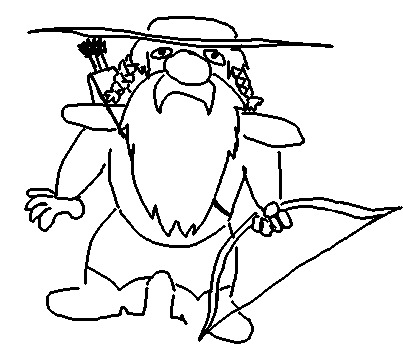
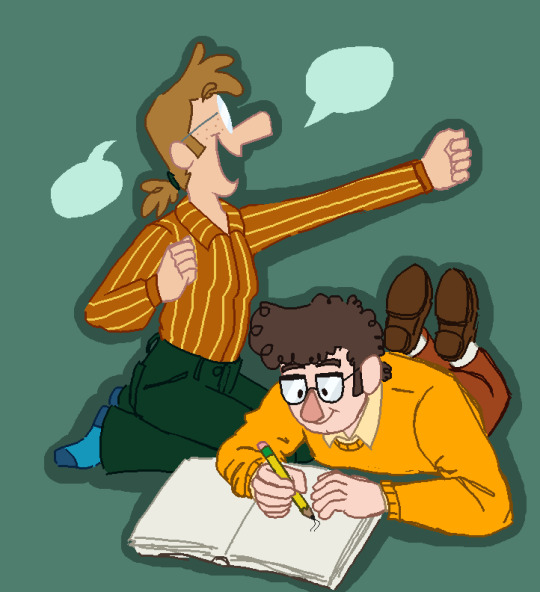
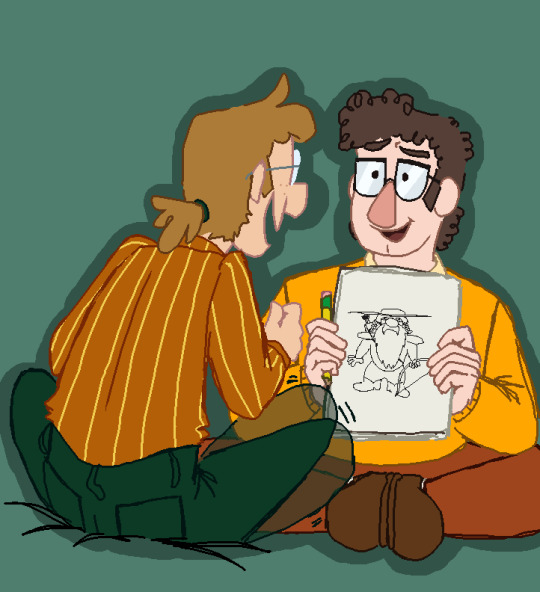

request for @tazmiilly that i got carried away with... guys designing dd&md characters and getting so excited. autusm 👍
#yes i am aware that it looks nothing like fords actual art style. let me live#i drew this thang and got obsessed with it. can you blame me#anyway i have soooooo many thoughts about dd&md#i think it came out a couple years earlier than d&d#considering ford has a full boxset in the early/mid 70s; and d&d didn't have real boxsets until the late 70s#i also think dd&md was made by someone a lot cooler and less awful than gary gygax WHOOPEEEEEE#ok i'll shut up now <3#tales of the wild zeep
338 notes
·
View notes
Text
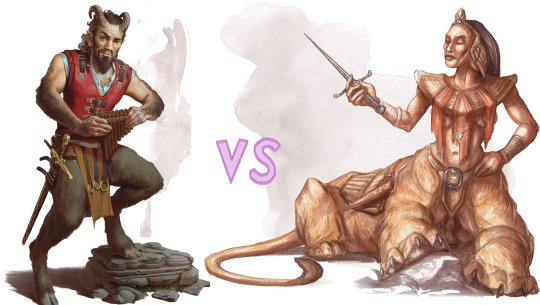
On the left, Satyr! 5 ft (1.5 m) tall fae, potentially with pipes that can charm you or knock you out. They're hedonistic, determined to fulfill thier every whim with no regard for consequences, and will drag everyone else along with them. But that's fine if you like the singing, dancing, and constant drinking of this poetic fraternity!...This satyr also looks like a pretty traditional version. Which matters, because old-school satyr's REAL magic was "not fainting from the amount of blood leaving the rest of their body." If you catch my drift. They likely need every inch of that loincloth.
On the right, Lamia! 6 ft tall, 8 ft long, and the lion version of a centaur! Full magical charms, illusions, and the ability to watch you from anywhere. They even have an "intoxicating touch," in case you wanna get out of your head for a bit. (I know they're usually half snake. most aren't in Dnd, blame "The History of Four-Footed Beasts" where Gygax seems to have learned about them.)
218 notes
·
View notes
Text
I'll admit that maybe I've spent too much of my teenage years reading and reading about shitty pulp fantasy, but I will die on the hill that Tolkien is not half as important for dnd style shit as people think; he's just the only contributing author who's still relevant and popular. Most of the the things people attribute to Tolkien are actually very clearly products of Howard (Conan the Barbarian) or Moorcock (Elric of Melnibone) or Leiber (Fafhrd and the Gray Mouser) or really any of the myriad pulp authors Gygax was pulling from as he developed dnd. Like come on "tolkien inspired settings with lovecraftian undertones" as though one of the most important foundational authors for dnd sword and story bullshit (complete with incredible amounts of race science) was not literally good friends with HP Lovecraft. Like you don't even need to actually read any of it(like I don't blame you for wanting to avoid it like most of this stuff is very bad) there's plenty of articles about the history of dnd out there which means you can observe this pattern of influence second hand. But if you're going to spend time talking about the current state of any genre (no matter how cheap or pulpy or generally shit) you should probably have the bare minimum of background knowledge on it. No Investigation, no right to speak
64 notes
·
View notes
Text
Things I Learned Reading "Slaying the Dragon: A Secret History of Dungeons & Dragons" by Ben Riggs

If you’re interested in learning about the early days of Dungeons & Dragons, you’ve got plenty of books to choose from, but there’s one I’d recommend above all others: Ben Riggs’ Slaying the Dragon: A Secret History of Dungeons & Dragons.
Most histories focus on the creative genius behind the game, but Riggs takes a different approach—he follows the money.
TSR’s rise and fall wasn’t just a matter of creative differences or bad luck; it was a slow-motion financial disaster shaped by mismanagement, bad deals, and corporate infighting. Understanding how the company made—and lost—its money is key to understanding why TSR no longer exists.
Gary Gygax was many things—tenacious, creative—but he wasn’t a saint. He deserves his fair share of the blame for TSR’s troubles and his own ousting from the company.
His lack of executive experience certainly didn’t help, but neither did the cocaine or his Quixotic pursuit of Hollywood success.
While much is made of his successor Lorraine Williams’ villainy, Gygax could be just as ruthless. He did everything in his power to ensure that his former creative partner and Dungeons & Dragons co-creator, Dave Arneson, received as little credit or compensation as possible.
TSR was a financial time bomb from the moment it signed a distribution deal with Random House. The deal gave TSR large cash advances in exchange for products, leading the company to churn out as much material as possible with little thought for long-term sustainability. When the products didn’t sell, Random House wanted its money back, and the whole scheme collapsed.
Magic: The Gathering and Vampire: The Masquerade didn’t kill TSR. Shoddy management and questionable financial practices did that. The other companies just helped bury the body.
#TSR#DND#ttrpg#gaming#dungeons & dragons#dungeons and dragons#roleplaying#ttrpg community#Slaying the Dragon#Ben Riggs#Gary Gygax
8 notes
·
View notes
Text
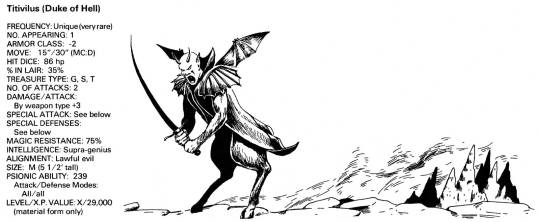
Titivilus, a Duke of Hell, is the messenger of Dispater, the ruler of the second plane. He is "notorious for his ability to twist words, to use words to confuse, and to confuse those using words." Gamers with the same tendencies have long mocked his titillating name. (Harry Quinn illustration from Gary Gygax's AD&D Monster Manual II, TSR, 1983) In our world medieval scribes blamed Titivilus for any errors that crept into their pages, and he was said to collect the wrong syllables from writers and singers as evidence of their theft from God.
#D&D#Dungeons & Dragons#Harry Quinn#AD&D#devil#Titivilus#Dis#Duke of Hell#Monster Manual II#dnd#Gary Gygax#Dungeons and Dragons#TSR
96 notes
·
View notes
Text
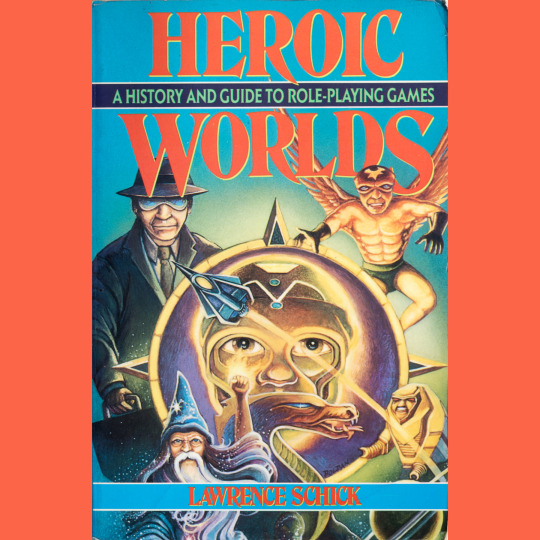
This is Heroic Worlds (1991), by Lawrence Schick (of White Plume Mountain fame).
There are a bunch of books from the ‘80s and ‘90s that attempt to catalog and review RPGs and they kind of boggle my mind (the same is true for the similar genre of print paperback tip guides for videogame). Even having lived in the pre-internet era, I don’t understand the rationale for these books from a publishing perspective. Which is not to say I don’t adore Heroic Worlds. I do! It just seems…improbable.
The book essentially amounts to an index of every RPG product produced from 1974 to 1990. It feels a tiny bit like an Overstreet Comic Book Price Guide (another publication I’ve always been baffled by), except without the prices (though there is a small section on collecting — the advice still rings true today, primarily: be patient!). The listings are interrupted periodically with short essays by a rogues gallery of RPG designers: Gary Gygax, Dave Arneson, Greg Stafford, Steve Jackson, Jennell Jaquays, Michael Stackpole, Ken St. Andre, Tom Moldvay, Ken Rolston, Sandy Petersen, Erick Wujcik, B. Dennis Sustare, N. Robin Crossby and Greg Gordon. That is a pretty all-star cast of characters talking about tabletop game design!
The main attraction for me, though, is Schick’s commentary. Nearly all of the listings are accompanied by very brief appraisals; they give Robert Christgau’s album reviews a run for their terseness. Schick has a dry wit that creeps into the capsule reviews that soon becomes addictive. And there is just something wonderful about having a period of time captured so exhaustively in a single volume. I don’t think EVERYTHING ever published through 1990 is in the index, but Schick sure makes the book feel like it does. I refer to it constantly for my Instagram posts, it was a constant companion when writing my own book and honestly, it deserves a lot of blame for the size and scope of my collection. Damn you, Schick!
(Repost from April 30, 2020; revised)
58 notes
·
View notes
Text
i feel like you can pretty effectively trace the lineage of my orcs all the way back to tolkein orcs. i think it goes something like
tolkein->DnD->TES->me
and obviously tolkein was drawing heavily from real life folklore, but to my knowledge real life orcs were pretty much indistinct from everything to goblins and trolls, so i'd argue that's far enough removed that it doesnt really have much of an impact
so like, we start off with tolkein orcs, which were straightforwardly evil but in a way that from what im aware tolkein consistently grappled with. if memory serves theyre born from tortured elven veterans and as such have a certain tragic texture to them. then, by the time we get to DnD, we see them lose that texture. standard setting DnD lore is pretty consistently just "what if tolkein but legally distinct and also without all the stuff that made tolkein's work interesting, and also throw in a bit of whatever pulp fantasy stuff was popular at the time", so DnD orcs are still pretty straightforwardly evil but without the interesting bits tolkein added. gygax was, from what i can tell, a man not very concerned with the morality or personhood of the enemies you killed. you kill orcs because theyre evil, theres nothing deeper to examine, despite the fact that they have a culture and language and capacity for higher thought theyre obviously not even people. obviously by how i'm phrasing this, im not the biggest fan of this version of orcs. that, however, is rectified in the next in line
TES orcs are very much of their setting, which is to say that they are backwards and horrible, just not moreso than any of the other races. in fact, i'd argue theyre one of the more sympathetically portrayed in the setting, especially by the time of skyrim. they dont keep slaves like the dunmer, theyre not fantasy fascists like the altmer, theyre not corrupt warmongering beurocrats like the imperials and the bretons, if anything theyre closest to the nords and redguards in terms of culture. theyve got that whole hoo-rah warrior race thing going on, theyre portrayed as both ugly and stupid, but theyre also honorable master craftsmen who worship one of the least harmful daedric princes and live a tight knit, communal lifestyle. theyve arguably got more texture than tolkein orcs, and definitely have more straightforward personhood and agency. they dont serve a dark lord, theyre not evil by default, theyre just another people in a fucked up and beautiful world. TES was one of my first exposures non-zelda fantasy, so as you can imagine it was pretty influential to my writing
and now we get to my orcs. they've got that master craftsmen thing turned up to 11, theyre neither ugly nor unintelligent (i blame horny internet art for how my orcs and goblins are supposed to look), their main god is arguably the primary protagonist of my setting, and they're one of the more academically advanced cultures in my setting. theyve still got that warrior race thing going on, theyre big and buff and green, but theyre also very far off from more typical orcs. i basically ship of theseus'd them into their own thing and just kept calling them orcs because i feel like that'd be the most effective shorthand for what they are. if anything, theyre ideologically closer to goku than anything else. y'know, not really "moral" in the traditional sense but still aligned with what a normal person might consider moral simply due to liking to help people out, liking the people around them being happy, and just hating casual cruelty. to be fair, agon's got a bit more of an intellectual reasoning for it than goku, but ultimately i think theyre pretty similar
3 notes
·
View notes
Text
#huh my circles of people have merged again#what the FUCK is going on with the Drow lore#like#W H Y is it the way that it is#Everything about their lore feels like it's a dark glimpse into a world of weirder and weirder kink via @thepioden
Moving this here so I'm not unnecessarily clogging OP's post but I'm pretty sure drow lore is Like That because for a good while a lot of the sourcebooks absolutely refused to talk to the drizzt novels, some authors just straight up drew from greyhawk/the old old modules where it was BARK BARK HORNY LEWD DROW DOMINATRIXES BARK BARK because gary gygax was unfathomably horny, and the guy writing the novels was literally told nothing as a work for hire but also is the opposite of unfathomably horny so.
Basically there's like two or three different streams of lore (though most of the worst stuff is gone now, thank god) and people fight about it all the time because some people conflate everything together and a lot of people blame the novels for things they demonstratably did not do, because it's easier to read a sourcebook than a novel presumably.
And yet, it's still not as much of a mess as surface elf lore, which was a collaborative project in making them absolute xenophobic nightmares for no apparent reason, accidentally
32 notes
·
View notes
Text
423. Various Authors - Dragon #102 (October 1985)
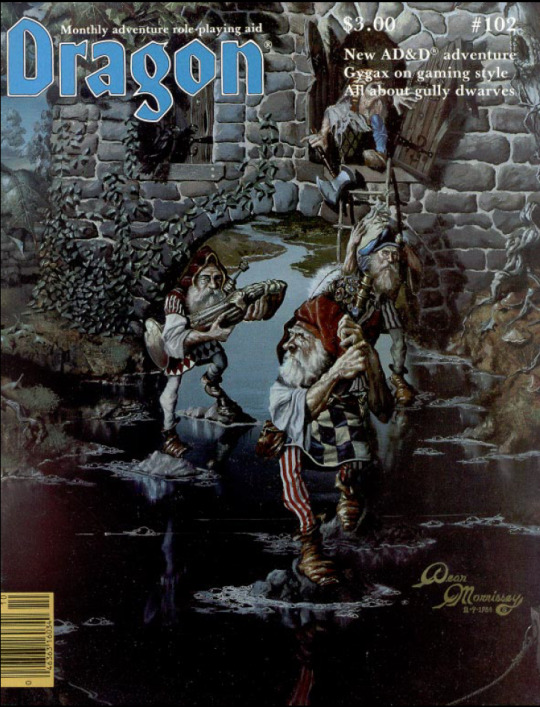
Welcome to October 1985 and we start off, as usual, with that month's issue of Dragon magazine. Centred around an adventure for players of 4th to 6th level, called Valley of the Earth Mother, the main points of interest are actually a couple of really good (or at least interesting) articles that are worth your time.

The first of these is an article where Gygax lets his inner Grognard flag fly by criticising what was then the recent move from a focus on combat to a focus on acting and roleplaying... I wonder what he would make of today's D&D scene. I don't necessarily agree with him here, but I get his point, he is warning of a need to return D&D to its "gaming" origins rather than the amateur theatrics that it was quickly becoming. However, it's not like it isn't his company leading to this, the shift towards more narrative intensive adventures, such as the modules by the Hickman's (Ravenloft and Dragonlance, for example) demand a less hack and slash and solve the puzzle approach, and a more "role playing" attitude by part of players. You have no one to blame but yourself Gary, and I do think it was a good move, while agreeing that a balance must be struck between those two sides of the game.

Other cool articles include a long one on Dragonlance's Gully Dwarves, with loads of info on those disgusting but also kind of cute beings, another article by Ed Greenwood on magical item this time bringing us Nine magical Wands from the Forgotten Realms and finally an article on how to populate your campaign worlds. Good stuff.

10 notes
·
View notes
Text
(And no, I'm afraid we can't pin this one on Gary Gygax. When it comes to popular media mistaking the German Renaissance in particular for the medieval period, we should probably be blaming Yuji Horii.)
"Generically medieval" settings can be annoying, but what really burns me is when people try to "correct" others about what the medieval period was really like, then hit the wrong era. They'll be setting forth a checklist of "authentically medieval" features and I'll be like, that's the German Renaissance. You are describing the German Renaissance.
3K notes
·
View notes
Text
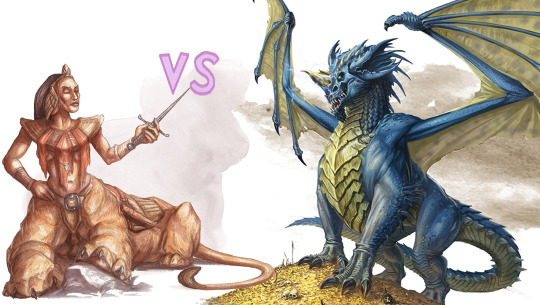
On the left, Lamia! 6 ft tall, 8 ft long, and the lion version of a centaur! Full magical charms, illusions, and the ability to watch you from anywhere. They even have an "intoxicating touch," in case you wanna get out of your head for a bit. (I know they're usually half snake. most aren't in Dnd, blame "The History of Four-Footed Beasts" where Gygax seems to have learned about them.)
On the right, Blue Dragon, the burrowing lightning dragon of the sand! 20-80 feet (6-24 m) long depending on age. What sets this lightning dragon apart from its peers is that they're quite social! They actually stick with thier families, are excellent parents, and even tend to settle into societies. These ones ones aren't actually full of murderous cruelty like most, they just like talking shit and manipulating people. They also excel at hallucination magic, which they use to do things like create nonexistant hazards, forcing travellers to go miles out of their way just for the hell of it.
#I had to move the dragon so much just to not take up 75% of the image XD#blue dragon#lamia#smash or pass#dnd#dnd 5e#d&d#5e#d&d 5e
89 notes
·
View notes
Link
In the news story that never ends, after reversing its position earlier and admitting that it was NOT the original TSR reincarnated, the new TSR company, embroiled in acrimony for the last two weeks, and having blamed the widespread criticism it has received on Wizards of the Coast, has deleted its own Twitter account and rebranded its website, misspelling it’s own name in the process. In just a week a much-loved trademark, which was associated with the creation of our entire hobby, and which generally attracted nostalgic affection as recently as a fortnight ago, has been utterly trashed in an astonishing display of self-destructive publicity and incompetence. Two companies (one of which was directly responsible for the damage) have now divested themselves of it, and most major conventions have banned the company behind it, due to the actions and statements of three people: Justin LaNasa, Stephen Dinehart, and Ernie Gygax. "TSR" is no longer a brand which anybody wants to be associated with — not even the company which ‘relaunched’ it two weeks ago, let alone the company they sniped it from. It has been a spectacular masterclass in how not to manage a brand.
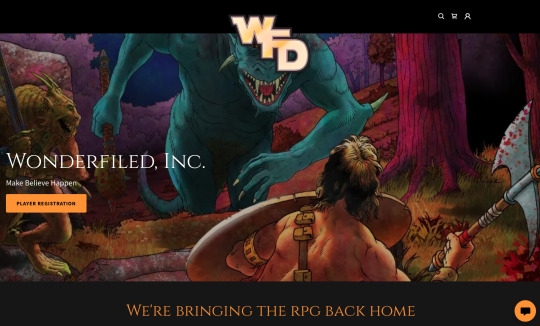
This followed an astonishing day of activity where one of the three TSR3 founders, Stephen Dinehart announced - publicly! - that he had blocked WotC and Hasbro on Twitter. After everybody thought things couldn't get any more ridiculous, they did.

As TSR2 rebranded to Solarian this week (after TSR3 sniped their name and trademark due to a missed filing), we've now gone from two TSRs to zero TSRs in the space of a few days.

Most people assume that WotC (or Hasbro) has been in contact with TSR3 regarding its use of copyrighted imagery. Meanwhile, search teams have been sent out for Michael, the mysterious PR officer announced last week who made two posts and then was never heard from again. In the meantime, somebody has set up a parody Twitter account for him.
[EN World, 7 July 2021]
53 notes
·
View notes
Text
A Wizard Did It!
It’s a staple in D&D to blame a wizard for the weird animal hybrids wandering the land, preying on the common folk. I’ve always found this to be a cop out. I’ve never really understood the distinction between animals and magical beasts in D&D. Is a griffon really that magical? Sure they don’t exist in the real world, but so what, they’re probably pretty normal in a fantasy one. And, while being a hybrid of lion and eagle, the griffon’s existence isn’t blamed on a mad wizard. It seems like the mad wizard theory is mostly reserved for explaining the origins of monsters Gygax made up after he bought a bag of five cent toys made in China to use on his gaming table.
I can’t help but wonder: “what is normal?” in Dungeons and Dragons. How are certain monsters explained, how are they different from animals? If it has animal level intelligence, lives in the wild, occasionally harasses humans that wander into its territory… Basically, if it walks like a duck and quacks like a duck…
For the sake of this post (and some in the future), I’m going to look at fantasy monsters through the lens of evolution. Is it possible that some of these monsters aren’t so far-fetched after all? Just because the world is full of magic doesn’t mean a wizard has to be blamed for everything.
2 notes
·
View notes
Text
Gary Gygax: "They can play as well as males, but they do not achieve the same sense of satisfaction from playing."
Just a fun admission that he managed to make the game fun for boys and not for girls when he ran it. Like...literally, that's what he's saying, he's just blaming ladybrain instead of himself for the failing.
I love telling people that Gary gygax was a biological essentialist because they always are so reticent to believe it. Like. he literally proudly said it out loud. Also have you ever actually read D&D? like. 3/4ths of everything is ontologically evil from birth
11K notes
·
View notes